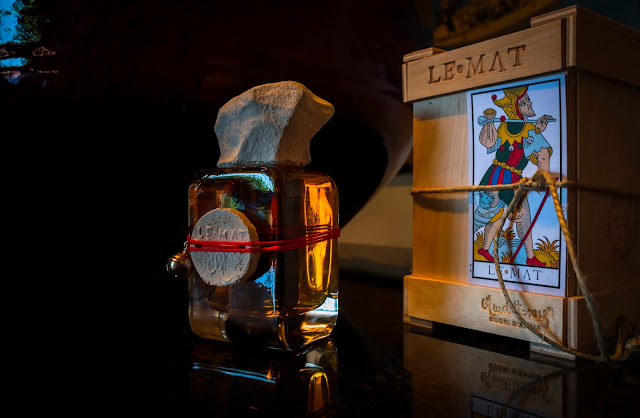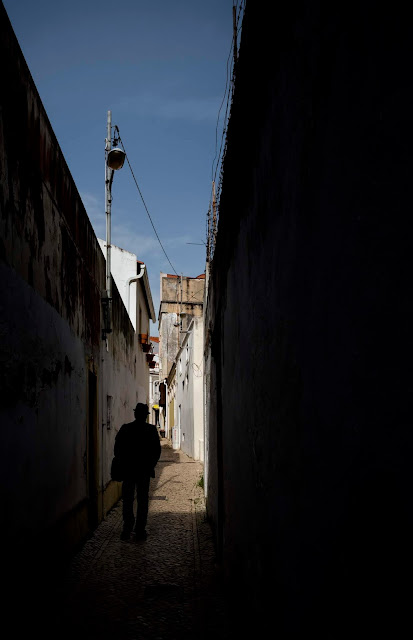There is a new tendency in
niche perfumeries to revolutionize the traditional structure of fragrances.
Whether in the construction based on the 3 floors of notes (head, heart and
drydown) or in the very concept of what a perfume is for. It's not only about
smelling vanilla or oud. It is also about providing the opportunity to travel
through unpredictable, non-linear and more wide and elaborated olfactory
landscapes. Like an olfactory "dream movie trailer."
Besides the Bogue (of Antonio
Gardoni) we must pay also attention to the creativity of the brand "The
Zoo" (of Christophe Laudamiiel). They are "concept" essences
that put us before challenges. In general they are complex and transport us to
environments (through combinations and contrasts of chord sets) and not to
isolated notes. We can, for example, inhabit Times Square (see the fragrance
with this name of Masque Milano) with the smell of the interior of the taxis,
the Chinese restaurant and the cherry in the lipstick of a passing Jessica
Rabbit. Or alternatively we board on a train with an unknown destination where
we are confronted successively with scents / landscapes of mysterious places.
From a herd of Tyranosauros (smelling of damp earth and primitive forest)
passing in the middle of our old barbershop smelling like an old cheap lotion -
Acqua Velva type - to a gas station lost on a deserted US road - where the wind
brings hay rolls scent and where we give ride to an hippie using an
extra-terrestrial Patchouli. Maybe we can choose the olfactory landscape of a
brothel in New Delhi or a pygmy village in the Sudan or simply refer to an
oasis in the middle of the Sahara. Shoe grease, laundry detergent, wild
flowers, champagne, a passing cat, my godmother's fox stole, the skin of a
woman in a garden at sunset.
We are probably moving to a
new paradigm where in the future people may also have fragrances to travel, by
smell, to specific places - imprisoned in bottles of essences. These olfactory
landscapes may not have pleasant smells or even be easy to use.
All this because I bought the
last creation (already celebrated) of Antonio Gardoni: MEM of Bogue.
I think MEM alludes to the
initials of the word memory (the meaning is not explained anywhere) and it may
be some kind of Fellini's Amarcod in Gardoni's eau de parfum.
However, opinions on MEM
differ. You love it or you hate it. Luca Turin classifies it as
"masterpiece" and the Kafkaesque blog agrees.
I must say that it is
difficult to describe (it is "compact" and almost impossible to
decode) one of the most "avant garde" fragrances that exist and is
already "in another championship".
It's an experience that lasts
- on paper tape because I have not yet dared to experiment on the skin - for at
least 3 days (when the "civet" of drydown still feels). The different
fragrance "sites" describe their components differently and Bogue
does not indicate them. We know only that Mr Gardoni referred: "the final
fragrance actually contains 86 ingredients, applied with a technique of"
micro-balancing mini-quantities of almost 'invisible' elements to create notes,
"ghosts," and suggestions that are "hard to pin down . "
Luckyscent presents the
following list: "Petitgrain, mandarin, grapefruit, lavender (4 different
species), ylang ylang, lily of the valley, white champaca, jasmine
grandiflorum, rose damascena, bourbon geranium, vanilla, peppermint, laurel,
Siam benzoin, rosewood, sandalwood, Himalayan cedarwood, labdanum, ambergris,
musk, castoreum, civet, amber. "
For me started with a bitter
orange caramelized (or will be tangerine marmalade?), and continues with the
aroma of sugar burned over cream-milk and a little coke. All this is based on a
symphony of 5 different types of lavender - distilled in such a way that the
final result turns out to be atypical for the lavender to which we are
accustomed mixed with a little air and resin from pines and vetiver (perhaps
also with medicinal mint candies). There is a multifloral and fruity facet with
bubble gum. Sometimes it seems that I am detecting many perfumes that I have
smelled before in my distant past. There are chords that disappear and seems to
come back. There are so many ingredients (it's 86 !!!!) that most certainly I
did not detected many of them. However after 2 to 3 hours I feel more petals of
sweet flowers and, as a consequence, the evocation of the soft skin of a female
neck.
After the sensation of passing
through the scents of a street within the first film "Blade Runner"
and running up the stairs of a city that constantly rebuilds with each step,
the perfume leads me to the figure of an old wise man sheltered in his beards
and in the penumbra of the memories of an immense library - with reams of books
to be lost in a ceiling of impenetrable clouds - like MEM. A huge and silent
space like the room where ages the hero of the film 2001 Odyssey in Space. So
we have a drydown accompanied by the drums of the orchestra interpreting
"Also sprach Zarathustra" - in the version of the OST of that film.
Many other "ghost" places could be counted but I do not want to spoil
the surprise sensations of those who also come to experience the long journey
of MEM.
MEM probably wants to
symbolize Memory but it may also, in my opinion, mean Memorable. Because it can
enter the history of perfumery as one of the first of a new generation of
fragrances - based on different assumptions.












